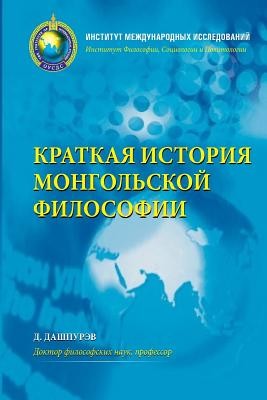| A Concise History of Mongolian Philosophy Contributor(s): Dashpurev, Dr D. (Author) |
|
 |
ISBN: 1983704571 ISBN-13: 9781983704574 Publisher: Createspace Independent Publishing Platform OUR PRICE: $9.50 Product Type: Paperback Language: Russian Published: January 2018 |
| Additional Information |
| BISAC Categories: - History | Asia - Central Asia |
| Physical Information: 0.35" H x 6" W x 9" (0.50 lbs) 150 pages |
| Descriptions, Reviews, Etc. |
| Publisher Description: Mongolian people, rooting their life into great landscape of natural environment and historically and traditionally living their nomadic life, have uniquely cultivated philosophical thoughts corresponding to them. The author attempts their intellectual patterns to be categorized as "Mongolian Philosophy" as he differentiates them from other people's. Their traditional life often with severe and cruel natural environment, upon which they depend their nomadic life and economic productivity, has infiltrated Shamanism in which people worship the eternal Tenger (heaven) and find the creator out in it into "Mongolian philosophy." In the Mongol Empire of 13th century led by Chinggis Khaan, it also played the role to pioneer the philosophically liberal spirit generous to various religious traditions. On the other hand, Mongols under the 5th Kublai emperor's and afterwards followed a long, historical path where politics, for their policy, promoted philosophical thoughts based on a particular religion or imported thought. Namely, Buddhism philosophy from 13th century to 19th and Marxism philosophy in the 20th spread among Mongols with a form of dogmatism under the patronage of then politics. And during the periods, Mongolian people's philosophical thinking was within the political cultures and intellectual limits. It is nowadays when choice freedom for religious and philosophical thoughts and development for information environment are guaranteed after the democratization in 1990 that expected is reconstruction of "Mongolian Philosophy" based on traditional nomadic cultures and reflecting on the whole image of its history. This Russian edition is its 4th, following the Mongolian original, the Mongolian script's published in Inner Mongolia, and Japanese. |